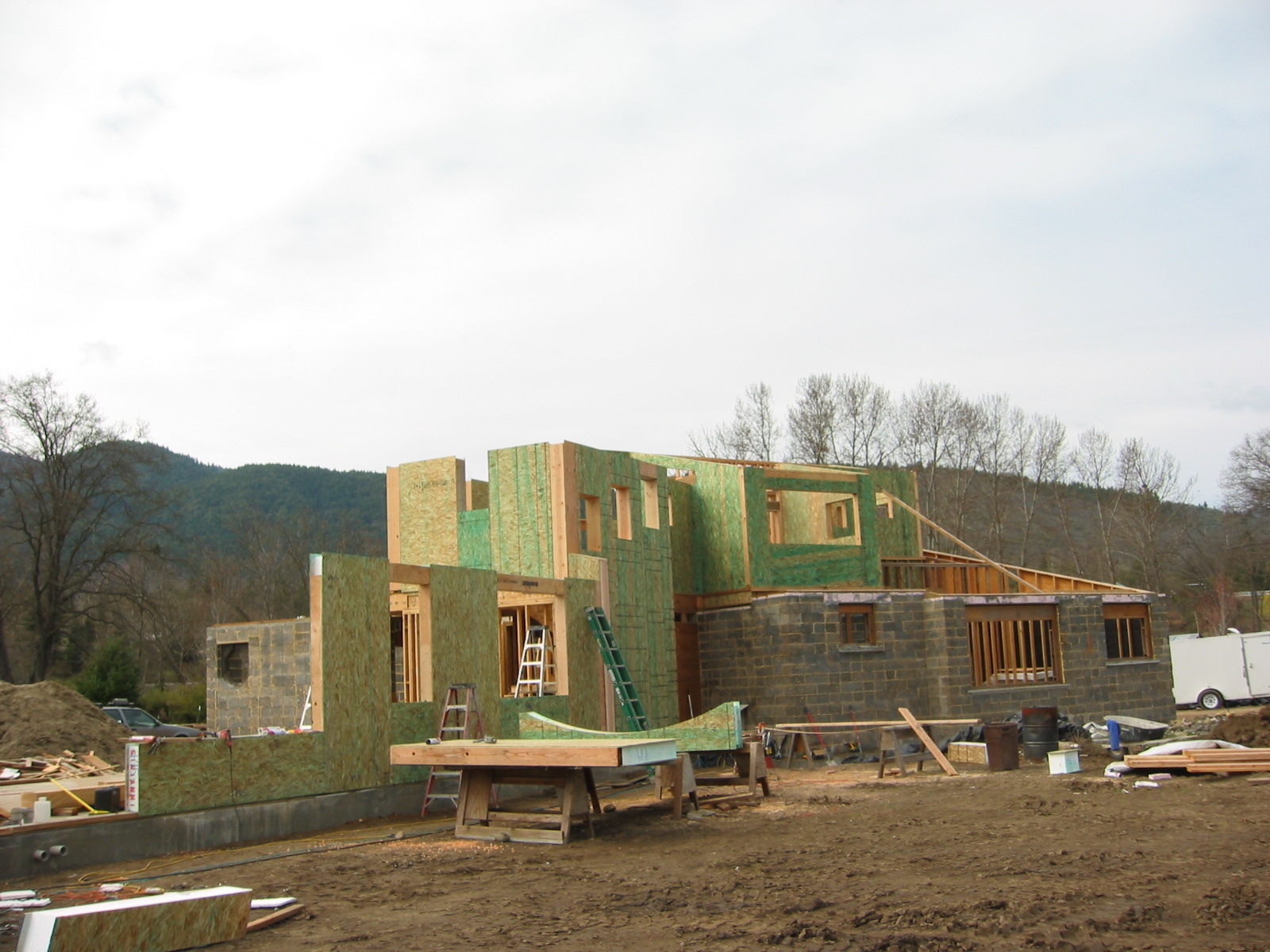Let’s face it: The housing sector is a buyers market. Buyers want the latest and the best of everything, while demanding the greatest possible value. What if there was a building technology that would make energy bills go down, home values go up, provide a very comfortable home while the buyer feels like an environmental hero?
SIPs (Structurally Insulated Panels) can provide this.
SIPs (Structurally Insulated Panels) have actually been around since the 1930’s. Frank Lloyd Wright used them. Now you can too. These structural panels are part of the growing trend in pre-fabricated materials, and can be used as walls, floors, and ceilings. They are sometimes called “sandwich panels”, and consist of an insulating core material with O.S.B. (Oriented Strand Board) glued to the outsides. In the U.S., S.I.Ps panels are typically made with an expanded-polystyrene core (E.P.S.), but are also available with a poly-urethane core. Alterative skin-materials can include metal, cement board, fiberglass, or pressure-treated plywood.
 Although they cost more than the lumber and labor for a stud-framed home, when the total job cost is adjusted for the savings from a less-expensive HVAC system, S.I.Ps. panels only added 6% to the job cost for a 1,000 S.F. home. In fact, with tax breaks and energy savings, in less than 3 years the homeowner broke even. If this homeowner put their monthly savings back into their mortgage payments, they would turn a 30-year into a 20-year mortgage.These panels can be installed in a fraction of the time it takes to stud-frame a building, and require only a few specialized tools such as nylon webbing and rachet straps at the jobsite. They can be ordered with electrical chases pre-cut into the panels at specified places, and on-site modification is fast as well.
Although they cost more than the lumber and labor for a stud-framed home, when the total job cost is adjusted for the savings from a less-expensive HVAC system, S.I.Ps. panels only added 6% to the job cost for a 1,000 S.F. home. In fact, with tax breaks and energy savings, in less than 3 years the homeowner broke even. If this homeowner put their monthly savings back into their mortgage payments, they would turn a 30-year into a 20-year mortgage.These panels can be installed in a fraction of the time it takes to stud-frame a building, and require only a few specialized tools such as nylon webbing and rachet straps at the jobsite. They can be ordered with electrical chases pre-cut into the panels at specified places, and on-site modification is fast as well.
 Do you think this would sounds good?
Do you think this would sounds good?
The future is here. Design Residential, Inc. is committed to providing clients with the design products they demand and deserve. Let us help you maintain your competitive advantage.
(Information and statistics included in this article were obtained from the SIPs article in issue #188 of Fine Homebuilding Magazine)
